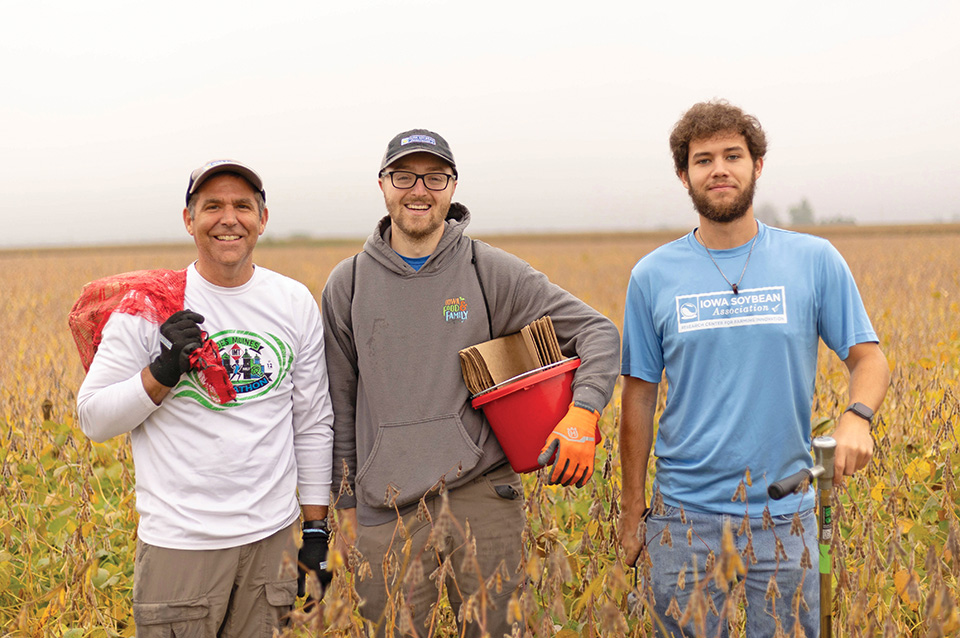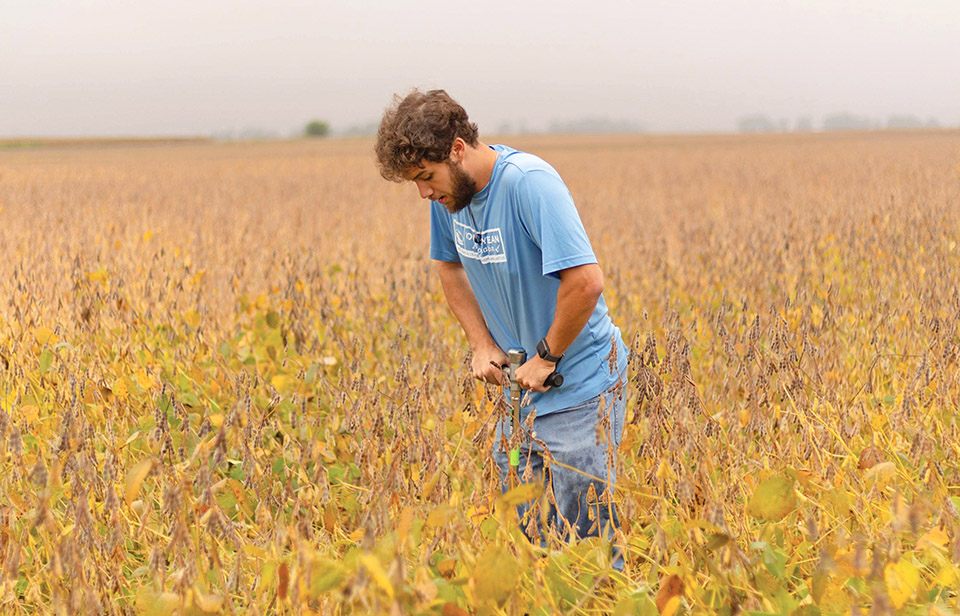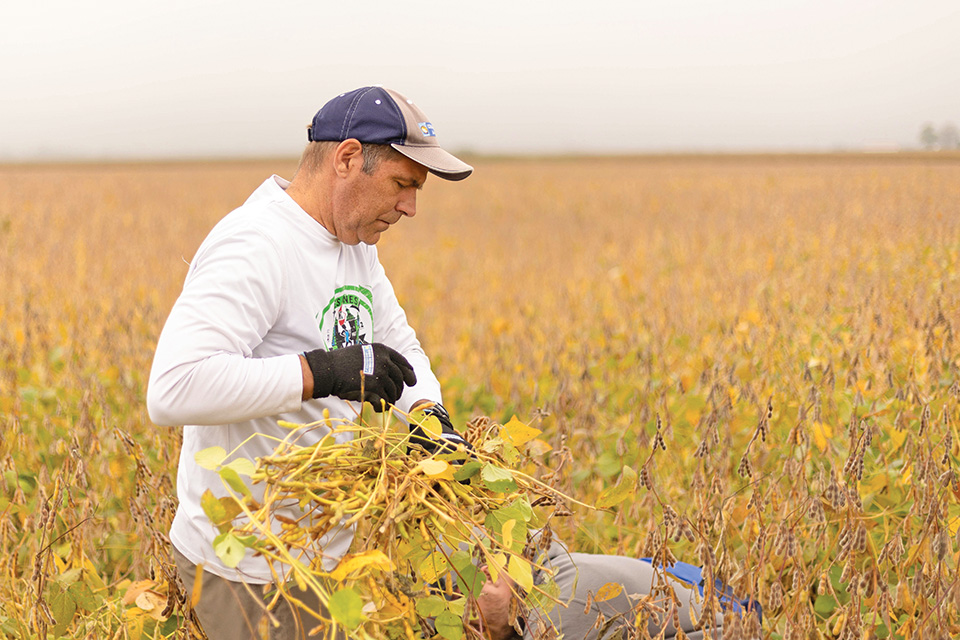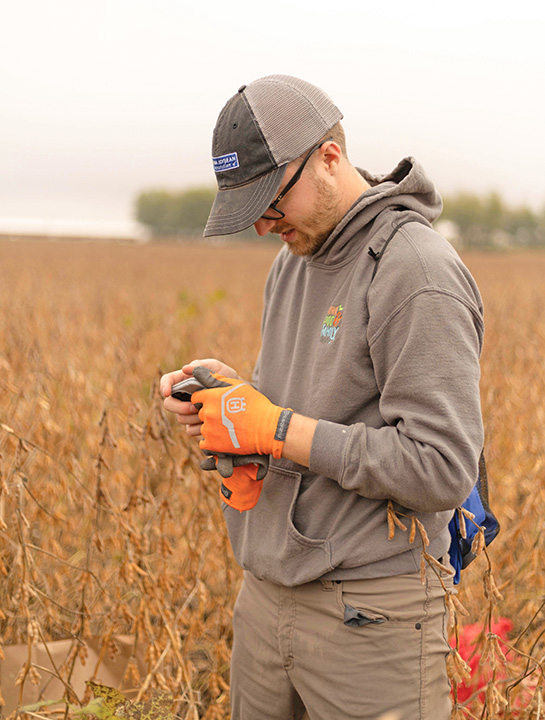
(Photo: Iowa Soybean Association / Joclyn Bushman)
Quality versus quantity
December 1, 2023 | Kriss Nelson
Growing a record 4.44 billion bushels of soybeans in 2021 proves U.S. farmers know how to produce a large quantity of soybeans. But what do we know about raising a quality soybean that could help improve a farmer’s Return on Investment (ROI)?
To help answer this question, the Iowa Soybean Association (ISA) and Kansas State University (KSU) began collaborating on a soybean quality sampling project.
Since 2019, researchers have been working to improve the spatial knowledge of soybean protein and oil across Iowa and Kansas. The United Soybean Board (USB) and the North Central Soybean Research Program (NCSRP) have helped fund the project.
We asked ISA Spatial Data Analyst Josh McDanel about what the project means, and how the results will help drive profitability for Iowa’s soybean growers.

The ISA already has numerous trials and projects, what makes this one different?
The survey component is important. We don’t have a good baseline of the soybean protein and oil values across the state. This research is an interesting look behind the curtain to help understand what affects the production of a higher quality soybean in terms of protein and oil.
Why is the soybean quality sampling project important to Iowa farmers?
If producers do not have a contract to grow a specialty high protein or high oil soybean, they may not be financially recognized for the quality of soybean they are raising.
We know protein is important for a better-quality soybean meal, and oil is important for the renewable fuels industry. If we can better market soybeans for those uses, it will be better for everyone.
The survey could also give growers a better understanding of what to expect if they want to contract acres for raising a specialty soybean.
What factors are being considered in this research?
We are working to see if location, soil and other factors such as rainfall and temperatures have on the soybean’s protein and oil value. We also want to determine how a farmer’s management or program could also affect protein and oil.

What qualifies a farmer’s field to be included in the soybean quality sampling program?
The soybean quality sampling program is available to any Iowa soybean farmer interested in learning more about the soybeans they produce.
In the 2023 growing season, 14 fields included in ISA’s Research Center for Farming Innovation’s (RCFI) strip trials were also incorporated in the soybean quality sampling program.
The soybeans evaluated in the program were not high protein or high oil varieties. Nine areas in each field were sampled before harvest; three soil samples were also pulled from the field. As of press time, results from these fields were unknown.
In 2024, McDanel is looking forward to seeing if there is any relation between soybean planting rates and the protein and oil quality of the soybean.
Participating farmers will receive their soil sample results and a report of the soybean oil and protein found in their nine samples.
What tools are available to farmers to help predict potential profit?
In addition to soybean sampling, another part of ISA’s participation in the program is the development of the Soybean Quality Economic Simulator.
The simulator allows producers to see the potential economic return from protein premium payments based on soybean quality. Currently, the tool only has the protein component available, but the oil component is under development.
What other tools could become available through the soybean quality sampling project?
KSU is creating a spatial prediction model based on satellite imagery. Using soybean samples and various models during different growth stages, researchers are trying to predict soybean quality in fields before they are harvested. By being able to detect soybean quality before harvest, they think growers can make a better argument for premiums before taking their soybeans to market.
Testimonies
Yield has been the key driver of soybean production, and research like the soybean quality sampling program is investigating what management practices may influence the soybean’s ability to provide higher protein, amino acid, or oil content.
“We want to capture the value of U.S. soybeans that are sold globally. That value is not only for market demands, but for the good of the farmer as well,” says Jack Cornell, director of sustainable supply at USB. “We are working to highlight our higher quality soybean to increase our marketability as soybeans are sold internationally, and we view quality as a high potential area for farmers to see enhanced profitability.”
Chris Gaesser, an ISA farmer-member from Lenox, believes producing a higher quality soybean is the future.
“We may come to a point where the quality of your soybeans turns into a premium or helps us out one way or another,” he says.
Taking part in the soybean sampling quality program revealed some interesting insights into his soybean crop.
“We found that stressed soybeans or lower yielding soybeans tend to have a higher protein content,” he says. “We also found the greater the oil content, the lower the protein and vice versa.”
The more farmers that participate in the soybean quality sampling, the better, he says.
“The more data sets we have, especially spread throughout different regions and weather conditions, help us learn,” he says. “The more you can see how that all affects oil and protein, if we ever get to where those numbers matter when we take it into town, we will be ahead of the curve.”
Back